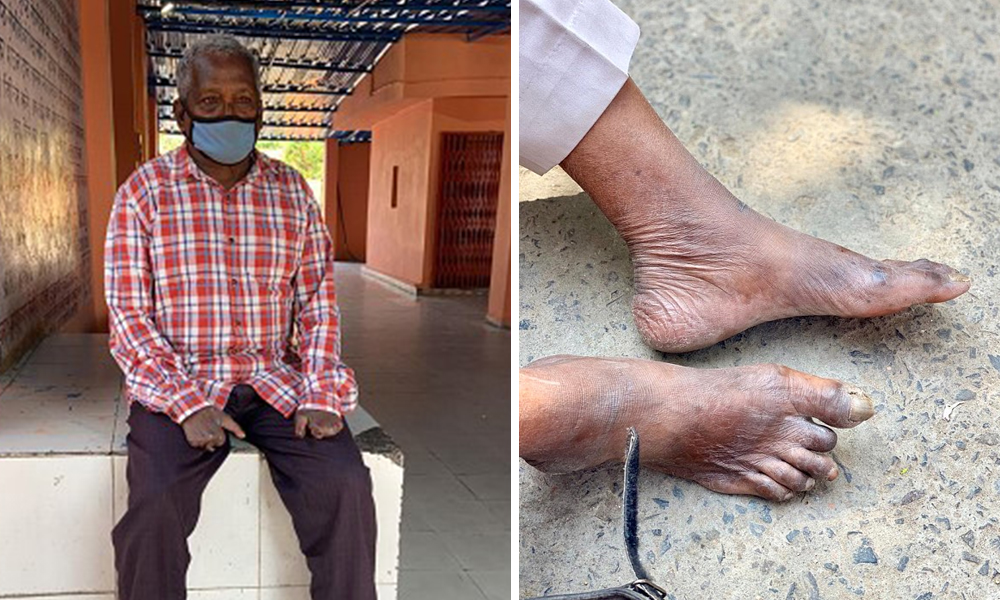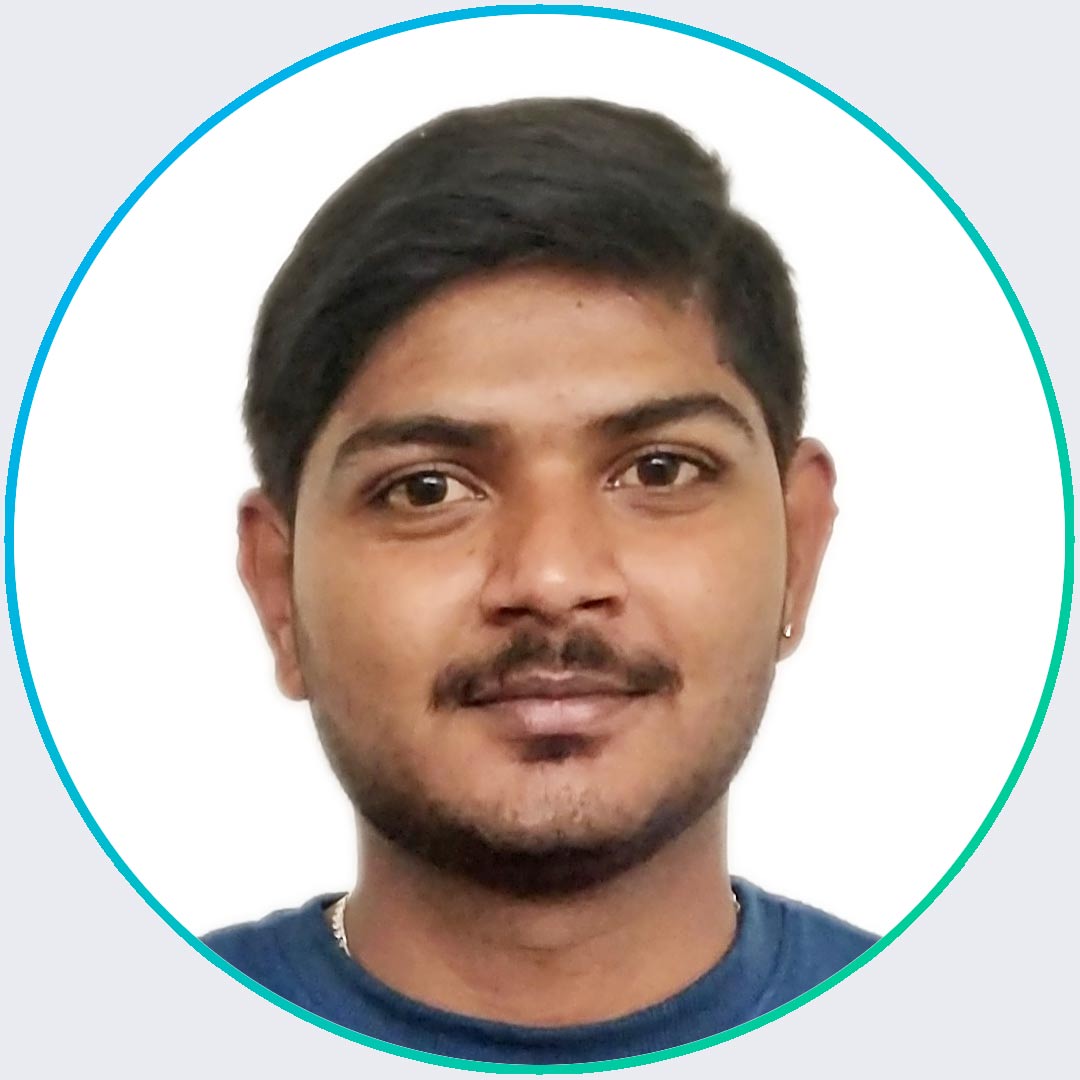
'This Place Accepts Us Without Looking Down Upon Us': Abandoned Patients Find Joy In Leprosy Colonies
India, 2 April 2021 7:03 AM GMT | Updated 2 April 2021 10:19 AM GMT
Creatives : Abhishek M
" An engineer by profession, Abhishek is the creative producer of the team, graphic designing is his passion and travelling his get away. In more ways than one, he makes the content visually appealing."
Mahadev was merely 25 and newly married when he contracted leprosy. "My whole life came crashing down in front of my eyes. People were not even ready to offer me water" he said. Many Leprosy patients are living as outcasts in isolation, where they become a no-name and their existence is not acknowledged.
In the middle of Delhi's hustle bustle sits a gated colony with dilapidated homes and a huge temple at the entrance. The colony, known as Satya Jeevan Leprosy Society, houses roughly thirty families who have at least one member that has been affected with leprosy. Now in their sixties and seventies, many residents of this colony first arrived in this city as children. This is where they have spent most years of their lives.
Mathura,11-years-old, discovered a small rupture on her body which got worse, and soon she was unable to walk properly. When people found out she had leprosy, they would tell others to keep her utensils away and maintain distance from her. She was then abandoned by her brother and started living in the leprosy colony at the age of 11.
She is now 60, living with her husband whom she met in the Delhi leprosy colony, who is also a leprosy-cured person. She says, "Life is full of happiness if we think of the happy moments and sad if we dwell in the bad times of our life." She teaches us that happiness is our own state of mind and nothing can make us sad if we fixate our thoughts on everything that is going good in our lives.
Mahadev was merely 25 and newly married when he contracted leprosy. "My whole life came crashing down in front of my eyes. People were not even ready to offer me water" said Mahadev. Mahadev belongs to a small village in Karnataka named Jalgaon.
Due to the disease and stigma attached to it, he was banished by his own people and he travelled all the way to Delhi in the year 1986 to find a home in Lajpat Nagar Leprosy Colony. Today Mahadev is 72 years old and looks at life as a blessing despite all the hardships life has thrown at him. "Now this is my abode, and I am grateful that this place recognises who I am and accepts me without looking down upon me."
Most of us think about leprosy as an ancient disease or the one that prevailed in our country during the British Era and not now. But the agonizing bacterial disease is still a reality to many people in our country and around the world today. Leprosy, which was declared eradicated in India in 2005, re-emerged in the country and remains an important public health issue with a high transmission.
Due to lack of awareness and poor medical & support infrastructure, many infected with the disease are left unattended and undiagnosed, living with long-term effects in dedicated leprosy colonies. But what makes it even more dreadful is dealing with the harsh stigma attached to the disease due to lack of awareness around the disease.
A person affected with it not only has to go through the painful physical effects, but its psychological effects are even broader.
Many people upon getting detected with leprosy are shunned by their families and villages and are forced to dwell in leprosy colonies away from society, in isolation that goes on forever even after they get free from the disease. India alone is home to approximately 750 leprosy colonies with more than 2 lakh people residing in them. This shows the extent of stigma and discrimination that still prevails around the disease in our society.
When Yashvant from Sangli, Maharashtra, was first diagnosed with leprosy he was only 12-year-old. He was immediately brought to the hospital when he began experiencing unusual symptoms like fever, swelling and severe pain. He was diagnosed with Leprosy. "I didn't even understand the disease well when I was detected with it.
When I look back, I think more than the disease, people's attitude towards the ill makes it more devastating." Despite getting a completely cured certificate from the hospital, he was barred from entering his own village. He is 60-year-old and has been living in a leprosy colony since then. Today he is married and lives with his son who is employed.
For the residents of the colony, many of whom are not even affected by leprosy, it is close to impossible to find rehabilitation, schools, jobs, life partners outside the colony.
Yashvant, Mathura and Mahadev are among the many leprosy-cured people in India from different backgrounds, and with varying levels of disability caused by the disease. They represent the realities of having combated the disease and are yet, victims of social stigma in society.
Most of these affected people were asked to leave their villages immediately after getting detected stating it as a 'chhoot-chhaat ki bimaari' (a disease you can get just through touch). There are several local laws that prevent persons affected with leprosy from accessing necessities and public places like markets or travelling on public transport.
Before the coronavirus wave, the government of India supported them with a monthly incentive of ₹3000, however, now we understand it has been discounted and receives this amount once in 6 months.
For those who have erased this horrific disease from their memory, leprosy patients today are not just battling with diagnosis and treatment but fighting for their right to dignified living. Most are living as outcasts in isolation, where they become a no-name and their existence is not acknowledged. They are also the victims of discrimination due to some appalling prevalent laws.
Due to lack of awareness of treatment and spread, often, leprosy patients are forced out of their homes, to go and live in a Leprosy Colony, with other people suffering from this disease. The stigma and misconceptions associated with leprosy and social isolation of those affected are widely prevalent, creating bigger obstacles towards their cure and rehabilitation.
In the past few years, India has reported the highest number of new leprosy cases in the world and claims the majority at about 63% of leprosy cases globally. Due to fear and lack of knowledge that the disease is curable, there are still over 30 lakh people across the world living undiagnosed and every day the disease causes further damage to their wellbeing, health, and livelihoods.
The awareness around leprosy is poor and hence diagnosis capabilities are underrepresented, and treatment is not widely known. The taboos and myths around the spread and perceived incurability of the disease intensify the situation making the plight of leprosy patients deplorable.
Mother Teresa once said, "The biggest disease today is not leprosy or tuberculosis, but the feeling of being unwanted, unloved and uncared for." Stuti Mitra, Associate Vice President, ACRE says, 'ACRE has joined hands with Delhi South Rotary Service Foundation, a small but courageous group of leprosy warriors, to not only help cure leprosy but also help lessen the stigma attached with it.''
Ignorance around leprosy has been the biggest challenge in the systemic reduction of this disease to insignificant levels. However, the truth is that Leprosy is curable, with zero transmission risk, if diagnosed in its early stages and supported with the right treatment.
Also Read: Karnataka: Two Men Attacked, Thrashed On Suspicion Of Cattle Smuggling; Six Arrested
 All section
All section













